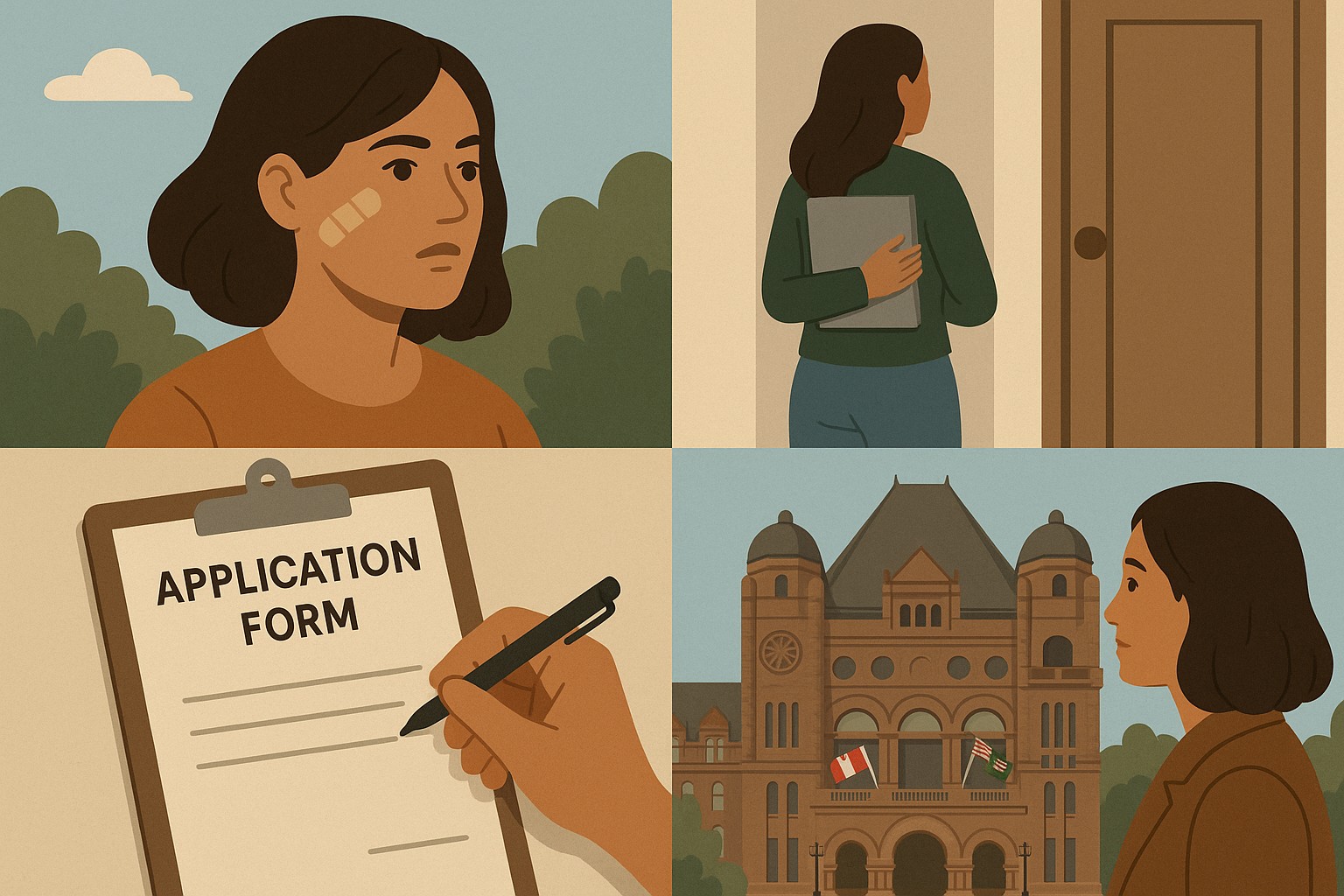Confidential Name Change in Ontario for Survivors of Domestic Violence
Learn how survivors of domestic violence in Ontario can apply for a confidential name change using the “Request to Omit Publication.” Step-by-step guide, required evidence, and survivor safety tips.

For many survivors of domestic violence, changing a legal name is more than a formality — it’s a powerful and liberating step toward reclaiming identity, rebuilding safety, and beginning a new chapter free from fear.
But in Ontario, the standard name change process comes with a serious risk: the government usually publishes the name change in the Ontario Gazette, making the change part of the public record. For survivors, this can create a dangerous trail an abuser might exploit.
Thankfully, the Change of Name Act includes a safeguard. Survivors can request a “Request to Omit Publication” on the grounds of domestic violence. This provision allows a confidential name change that will not be announced publicly.
This guide explains how the process works and the evidence you’ll need to protect your privacy and safety.
The Standard Name Change Process and the Public Notice Rule
In most cases, when an adult applies for a legal name change in Ontario:
The application is submitted to ServiceOntario.
Once approved, the government is required to publish the old name and new name in the Ontario Gazette.
This public notice exists to prevent fraud by alerting creditors and others to the change.
For survivors of abuse, however, this rule can act as a beacon to an abuser, putting safety at risk.
The Domestic Violence Exemption: Your Right to Privacy
The law recognizes this danger. The Request to Omit Publication provision lets survivors ask the Registrar General to waive the public notice requirement.
To qualify, you must show that publishing your name change would create a reasonable risk to your safety or your child’s safety.
This exemption is not automatic. You’ll need to provide:
A personal written explanation of the risks.
Supporting documents that prove your history of abuse or ongoing safety concerns.
How to Apply for a Confidential Name Change in Ontario
Step 1: Get the Correct Application Package
Download the Application for Change of Name package from the ServiceOntario website. Always use the most up-to-date forms.
Step 2: Complete the Standard Application
Fill in your personal details, current legal name, and proposed new name. This step is the same for all applicants.
Step 3: Complete the “Request to Omit Publication”
This is the most important part for survivors. You must:
Write a clear, detailed statement explaining your fear of harm.
Include information such as:
Your relationship to the abuser.
A brief history of abuse (no graphic details required).
Why public disclosure would endanger you.
Example: “My former partner has a history of stalking and has used online records to find me before. Publishing my name change would make it easier for him to locate me and my child, putting us at serious risk.”
Step 4: Gather Strong Supporting Evidence
Your request is more persuasive with documents, such as:
A restraining order or peace bond.
A police report or occurrence number.
A letter from a support worker (police officer, social worker, counsellor, victim services worker, or shelter staff).
A sworn affidavit (e.g., Form 14A from family court).
Medical records if you have injuries documented by a healthcare provider.
Step 5: Submit Your Package -
Send your completed application, your written statement, and all supporting documents to ServiceOntario (by mail or online as instructed). You’ll also need to pay the government fee.
After Your Application Is Approved
If the Registrar General accepts your request:
Your name change will not appear in the Ontario Gazette.
You will receive an official Change of Name Certificate in the mail.
You can then update your ID and records, including your:
Driver’s license
Health card
Social Insurance Number
Passport
Bank accounts
Why This Matters for Survivors
For survivors of domestic violence, confidentiality is not a luxury — it’s a necessity. This process ensures that a name change can serve its purpose: providing a fresh start without creating new risks.
By using the Request to Omit Publication, survivors can protect their privacy while still securing the legal recognition needed to move forward.
Key Takeaways
The default rule is public notice in the Ontario Gazette.
Survivors of domestic violence can apply for the Request to Omit Publication to keep the change confidential.
A strong personal statement and supporting documents are essential.
Once approved, survivors receive a Change of Name Certificate to update all legal records safely.
⚠️ Disclaimer: This article provides general information, not legal advice. Survivors should contact Victim Services Ontario, a domestic violence shelter, or a community legal clinic for help with their application.
